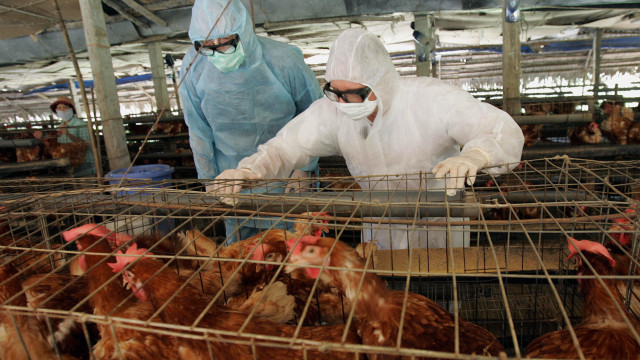





























See Also
See Again
© Getty Images
0 / 30 Fotos
What is tooth-in-eye surgery?
- Osteo-odonto-keratoprosthesis (OOKP), also known as “tooth-in-eye” surgery, is a procedure that quite literally puts a patient’s tooth inside their eye. Used when a cornea transplant isn't possible, the patient's tooth is extracted and shaped into an artificial cornea instead.
© Shutterstock
1 / 30 Fotos
It began with a crystal tooth
- OOKP was first developed in Rome by an ophthalmic surgeon named Benedetto Strampelli. Many attempts were made using different materials, including glass, metal, and even quartz crystal before the first prosthetic was made from a tooth in the 1960s.
© Shutterstock
2 / 30 Fotos
Thousands of surgeries worldwide
- It took around 20 years for another Italian scholar to refine the technique: in the 1980s, Giancarlo Falcinelli performed the first successful surgery. It soon gained popularity and has since been performed over 4,500 times worldwide.
© Getty Images
3 / 30 Fotos
The need for such extreme measures
- For patients with end-stage ocular surface disease and other such severe conditions, traditional corneal transplants are either not feasible or are likely to fail. They can also incur complications including detachment, infection, and/or degeneration of the donor cornea.
© Shutterstock
4 / 30 Fotos
A lifeline for those in need
- Tooth-in-eye surgery can also provide a lifeline for people who don’t have the opportunity to get a corneal transplant. A 2016 survey revealed that only 1.5% of candidates actually received a donor, and that 53% of the world's population lacked access to the surgery.
© Shutterstock
5 / 30 Fotos
So, why a tooth?
- The patient's tooth creates an artificial cornea called a keratoprosthesis implant. As unusual as the method sounds, the tooth provides stability as well as a strong blood supply to the eye. So, by using a tooth, there is a lower risk of graft rejection or detachment.
© Getty Images
6 / 30 Fotos
The eyetooth becomes the eye
- Ironically, the tooth most often used is the canine, which is also known as the “eyetooth” since it is located below the eye. The main body of the implant, the keratoprosthesis, is then made by attaching the tooth root to a segment of bone tissue.
© Getty Images
7 / 30 Fotos
A healthy smile is a must
- It must, however, be a healthy tooth in order for the procedure to work. Patients need to make sure that they are maintaining good oral health and passing all their dental checks if they want to be approved for surgery.
© Shutterstock
8 / 30 Fotos
A bolt in the eye
- Some bone and debris are then removed, along with the tooth, which is reshaped to resemble a bolt. A hole is then drilled into the tooth to accommodate a clear plastic tube called an optical lens.
© Shutterstock
9 / 30 Fotos
Cheeky surgery
- Once ready, the tooth lens is then surgically embedded into the patient's cheek. It stays there for around four months, during which time a layer of tissue grows around it. It can then begin to receive a new blood supply, which keeps it alive in preparation for phase two.
© Shutterstock
10 / 30 Fotos
Ocular phase
- This completes phase one, otherwise known as the “delta phase.” Once recovered, the patient is then ready for the “ocular phase,” where a patch of skin is taken from inside the cheek and sewn beneath the eyelid. This then creates a flap that will accommodate the tooth.
© Getty Images
11 / 30 Fotos
Putting the tooth in the eye
- The eye is then opened up and the inner lining of the eyelid, along with the damaged iris, the lens, and any remaining scar tissue, is taken out. The tooth composite is then inserted beneath the flap of skin sewn onto the eye.
© Getty Images
12 / 30 Fotos
Letting the light in
- Finally, a hole is cut into the flap to let light into the lens, which can then pass through the clear artificial cornea to the retina. As a result, patients typically start to regain their vision a month or two after the surgery is complete.
© Shutterstock
13 / 30 Fotos
Who can benefit from the procedure?
- The ideal candidates are people with damaged corneas but otherwise healthy eyes. OOKP usually treats corneal blindness and those suffering from end-stage ocular surface disease. It may also help with eye trauma and those who have had multiple failed cornea transplants.
© Shutterstock
14 / 30 Fotos
Not all eyes are suitable
- Certain medical ailments unfortunately render patients unsuitable for surgery. These include uncontrolled diabetes, autoimmune diseases, severe glaucoma, irreparable retinal detachment, eyes incapable of perceiving light, and phthisis.
© Shutterstock
15 / 30 Fotos
Smokers are not welcome
- Those who smoke are discouraged from the surgery, along with anyone who has poor dental health. Patients below the age of 17 are also not ideal due to high bone turnover, as well as anyone with a mental health issue that could make them struggle with aftercare.
© Shutterstock
16 / 30 Fotos
Over 90% success rate
- It may be difficult to qualify, but OOKP surgery has a very high success rate. According to a study from February 2023, the chances of restoring functional vision stand at a whopping 94%.
© Shutterstock
17 / 30 Fotos
Restoring vision after decades
- OOKP can be performed on the older generation and has proved to be highly effective in the long term, with 94% of patients still being able to see 30 years after having the surgery. It can also be effective even decades after a patient has lost their sight.
© Shutterstock
18 / 30 Fotos
A bespoke service
- One of the reasons this surgery is so sought-after is because it is a bespoke service, where the exact tooth and recovery time is tailored to each patient. It’s also an incredibly intricate and complex procedure that requires a highly specialized surgeon.
© Getty Images
19 / 30 Fotos
Beware the risks
- As with any surgical procedure, OOKP carries certain risks including infection and inflammation, which can cause a patient to lose their implant. There is also a chance that the patient could develop glaucoma or dental issues.
© Getty Images
20 / 30 Fotos
It might not look good
- One of the biggest drawbacks is that the eye won’t look the same. Sadly, the aesthetics are still rather poor, as the eye is covered with some tissue from inside the cheek, making it appear pink with a small dark circle in the middle. This can be a challenge for some patients.
© Shutterstock
21 / 30 Fotos
Physically and emotionally demanding
- As the surgery is performed in two stages, with several months between each, it can be a physically and emotionally demanding experience for the patient. They may require specialized monitoring and sometimes medication.
© Getty Images
22 / 30 Fotos
It’s not a quick fix
- The recovery period for OOKP surgery can vary from patient to patient, but it typically takes around six to eight weeks after the final phase is complete. This means the total duration of surgery and recovery can be up to eight months.
© Shutterstock
23 / 30 Fotos
Exercise could damage the eye
- In addition, patients must refrain from engaging in strenuous activity until after they are fully recovered. They also have to attend follow-up appointments and follow a strict aftercare routine.
© Shutterstock
24 / 30 Fotos
Gaining clarity over the years
- OOKP surgery has come a long way since its inception, and patients now experience better vision, higher success rates, lower risks, and better designs. Procedures have also become more affordable, and the aftercare is more advanced.
© Shutterstock
25 / 30 Fotos
Where can this procedure be done?
- The procedure has been carried out thousands of times around the world over the last few decades. It’s currently available in 10 countries, including Australia, the UK, Japan, Germany, and India.
© Getty Images
26 / 30 Fotos
Moving to Canada
- In February 2025, Canada also began performing the surgery. Starting with three test patients, should the surgery go well, there is hope the treatment will be offered in the long term.
© Shutterstock
27 / 30 Fotos
The gift of sight
- Sharron Kay Thornton (pictured) is just one example of a patient who has benefited from tooth-in-eye surgery. Thornton was blind for nine years before she became one of the first patients in the US to undergo the procedure in 2009, and fully regained her sight.
© Getty Images
28 / 30 Fotos
A healthy smile could give you hope
- The future of OOKP surgery looks bright, with ongoing research and development underway. So, as long as patients can get their heads around these unusual methods, healthy teeth could be the answer to healthy sight. Sources: (CBC) (New Atlas) (Optimax) (Mya Care) See also: These celebrities struggle with sight
© Getty Images
29 / 30 Fotos
© Getty Images
0 / 30 Fotos
What is tooth-in-eye surgery?
- Osteo-odonto-keratoprosthesis (OOKP), also known as “tooth-in-eye” surgery, is a procedure that quite literally puts a patient’s tooth inside their eye. Used when a cornea transplant isn't possible, the patient's tooth is extracted and shaped into an artificial cornea instead.
© Shutterstock
1 / 30 Fotos
It began with a crystal tooth
- OOKP was first developed in Rome by an ophthalmic surgeon named Benedetto Strampelli. Many attempts were made using different materials, including glass, metal, and even quartz crystal before the first prosthetic was made from a tooth in the 1960s.
© Shutterstock
2 / 30 Fotos
Thousands of surgeries worldwide
- It took around 20 years for another Italian scholar to refine the technique: in the 1980s, Giancarlo Falcinelli performed the first successful surgery. It soon gained popularity and has since been performed over 4,500 times worldwide.
© Getty Images
3 / 30 Fotos
The need for such extreme measures
- For patients with end-stage ocular surface disease and other such severe conditions, traditional corneal transplants are either not feasible or are likely to fail. They can also incur complications including detachment, infection, and/or degeneration of the donor cornea.
© Shutterstock
4 / 30 Fotos
A lifeline for those in need
- Tooth-in-eye surgery can also provide a lifeline for people who don’t have the opportunity to get a corneal transplant. A 2016 survey revealed that only 1.5% of candidates actually received a donor, and that 53% of the world's population lacked access to the surgery.
© Shutterstock
5 / 30 Fotos
So, why a tooth?
- The patient's tooth creates an artificial cornea called a keratoprosthesis implant. As unusual as the method sounds, the tooth provides stability as well as a strong blood supply to the eye. So, by using a tooth, there is a lower risk of graft rejection or detachment.
© Getty Images
6 / 30 Fotos
The eyetooth becomes the eye
- Ironically, the tooth most often used is the canine, which is also known as the “eyetooth” since it is located below the eye. The main body of the implant, the keratoprosthesis, is then made by attaching the tooth root to a segment of bone tissue.
© Getty Images
7 / 30 Fotos
A healthy smile is a must
- It must, however, be a healthy tooth in order for the procedure to work. Patients need to make sure that they are maintaining good oral health and passing all their dental checks if they want to be approved for surgery.
© Shutterstock
8 / 30 Fotos
A bolt in the eye
- Some bone and debris are then removed, along with the tooth, which is reshaped to resemble a bolt. A hole is then drilled into the tooth to accommodate a clear plastic tube called an optical lens.
© Shutterstock
9 / 30 Fotos
Cheeky surgery
- Once ready, the tooth lens is then surgically embedded into the patient's cheek. It stays there for around four months, during which time a layer of tissue grows around it. It can then begin to receive a new blood supply, which keeps it alive in preparation for phase two.
© Shutterstock
10 / 30 Fotos
Ocular phase
- This completes phase one, otherwise known as the “delta phase.” Once recovered, the patient is then ready for the “ocular phase,” where a patch of skin is taken from inside the cheek and sewn beneath the eyelid. This then creates a flap that will accommodate the tooth.
© Getty Images
11 / 30 Fotos
Putting the tooth in the eye
- The eye is then opened up and the inner lining of the eyelid, along with the damaged iris, the lens, and any remaining scar tissue, is taken out. The tooth composite is then inserted beneath the flap of skin sewn onto the eye.
© Getty Images
12 / 30 Fotos
Letting the light in
- Finally, a hole is cut into the flap to let light into the lens, which can then pass through the clear artificial cornea to the retina. As a result, patients typically start to regain their vision a month or two after the surgery is complete.
© Shutterstock
13 / 30 Fotos
Who can benefit from the procedure?
- The ideal candidates are people with damaged corneas but otherwise healthy eyes. OOKP usually treats corneal blindness and those suffering from end-stage ocular surface disease. It may also help with eye trauma and those who have had multiple failed cornea transplants.
© Shutterstock
14 / 30 Fotos
Not all eyes are suitable
- Certain medical ailments unfortunately render patients unsuitable for surgery. These include uncontrolled diabetes, autoimmune diseases, severe glaucoma, irreparable retinal detachment, eyes incapable of perceiving light, and phthisis.
© Shutterstock
15 / 30 Fotos
Smokers are not welcome
- Those who smoke are discouraged from the surgery, along with anyone who has poor dental health. Patients below the age of 17 are also not ideal due to high bone turnover, as well as anyone with a mental health issue that could make them struggle with aftercare.
© Shutterstock
16 / 30 Fotos
Over 90% success rate
- It may be difficult to qualify, but OOKP surgery has a very high success rate. According to a study from February 2023, the chances of restoring functional vision stand at a whopping 94%.
© Shutterstock
17 / 30 Fotos
Restoring vision after decades
- OOKP can be performed on the older generation and has proved to be highly effective in the long term, with 94% of patients still being able to see 30 years after having the surgery. It can also be effective even decades after a patient has lost their sight.
© Shutterstock
18 / 30 Fotos
A bespoke service
- One of the reasons this surgery is so sought-after is because it is a bespoke service, where the exact tooth and recovery time is tailored to each patient. It’s also an incredibly intricate and complex procedure that requires a highly specialized surgeon.
© Getty Images
19 / 30 Fotos
Beware the risks
- As with any surgical procedure, OOKP carries certain risks including infection and inflammation, which can cause a patient to lose their implant. There is also a chance that the patient could develop glaucoma or dental issues.
© Getty Images
20 / 30 Fotos
It might not look good
- One of the biggest drawbacks is that the eye won’t look the same. Sadly, the aesthetics are still rather poor, as the eye is covered with some tissue from inside the cheek, making it appear pink with a small dark circle in the middle. This can be a challenge for some patients.
© Shutterstock
21 / 30 Fotos
Physically and emotionally demanding
- As the surgery is performed in two stages, with several months between each, it can be a physically and emotionally demanding experience for the patient. They may require specialized monitoring and sometimes medication.
© Getty Images
22 / 30 Fotos
It’s not a quick fix
- The recovery period for OOKP surgery can vary from patient to patient, but it typically takes around six to eight weeks after the final phase is complete. This means the total duration of surgery and recovery can be up to eight months.
© Shutterstock
23 / 30 Fotos
Exercise could damage the eye
- In addition, patients must refrain from engaging in strenuous activity until after they are fully recovered. They also have to attend follow-up appointments and follow a strict aftercare routine.
© Shutterstock
24 / 30 Fotos
Gaining clarity over the years
- OOKP surgery has come a long way since its inception, and patients now experience better vision, higher success rates, lower risks, and better designs. Procedures have also become more affordable, and the aftercare is more advanced.
© Shutterstock
25 / 30 Fotos
Where can this procedure be done?
- The procedure has been carried out thousands of times around the world over the last few decades. It’s currently available in 10 countries, including Australia, the UK, Japan, Germany, and India.
© Getty Images
26 / 30 Fotos
Moving to Canada
- In February 2025, Canada also began performing the surgery. Starting with three test patients, should the surgery go well, there is hope the treatment will be offered in the long term.
© Shutterstock
27 / 30 Fotos
The gift of sight
- Sharron Kay Thornton (pictured) is just one example of a patient who has benefited from tooth-in-eye surgery. Thornton was blind for nine years before she became one of the first patients in the US to undergo the procedure in 2009, and fully regained her sight.
© Getty Images
28 / 30 Fotos
A healthy smile could give you hope
- The future of OOKP surgery looks bright, with ongoing research and development underway. So, as long as patients can get their heads around these unusual methods, healthy teeth could be the answer to healthy sight. Sources: (CBC) (New Atlas) (Optimax) (Mya Care) See also: These celebrities struggle with sight
© Getty Images
29 / 30 Fotos
Tooth-in-eye surgery: the dental procedure helping people see again
Find out how a healthy smile could restore your vision!
© Getty images
It may sound like something out of a sci-fi film, but “tooth-in-eye” surgery is actually an incredibly effective procedure that can restore a patient's eyesight and even recover complete blindness.
Indeed, the thought of having a tooth placed inside your eye may sound unappealing, but osteo-odonto keratoprosthesis (OOKP) is a revolutionary surgery that uses a tooth instead of a traditional cornea transplant. What's more, it boasts an almost 95% success rate.
Curious to find out how this strange operation works? Click on for a truly eye-opening read!
RECOMMENDED FOR YOU






























MOST READ
- Last Hour
- Last Day
- Last Week








